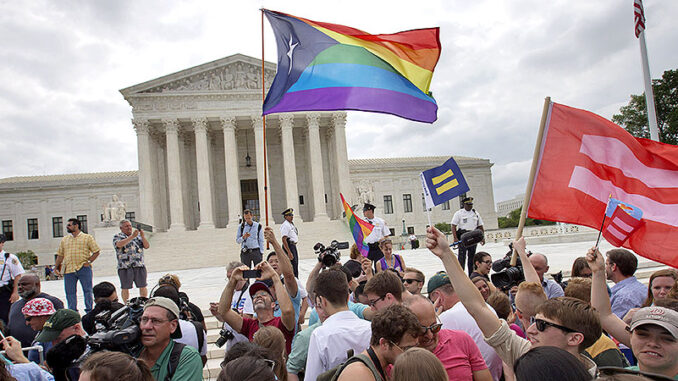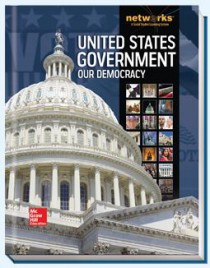

At the end of June, the Supreme Court of the United States (SCOTUS) ended its 2014–2015 term with a number of hot-topic decisions.
One of its biggest was a landmark ruling on same-sex marriage. This means that the decision will have significant and lasting impact on future legislation.
You’ve probably witnessed the flurry of reactions and commentary on this ruling. This week, btw provides some perspective on what happened.
Interpreters of the Constitution
When the founders of our country wrote the Constitution in 1787, they deliberately made the language of this structural document broad and open to interpretation. This was a unique design compared to the governing documents of other nations, which typically outlined governing powers very specifically. The members of the Constitutional Convention wrote the document in that way to ensure a continual balance of an individual’s right to freedom with society’s need for order in an ever-changing world.
Cases
The Supreme Court, made up of nine judges appointed by the president and confirmed by Congress, cannot make generalized decisions; they issue rulings on specific cases. The Court chooses which legal cases it will hear for each year’s term. These cases are presented to them through petitions for writs of certiorari (cert for short). Out of the approximately 10,000 petitions submitted each year, only 75-80 are selected.
In order to be eligible, cases must meet one or more of the following criteria:
- a diversity of citizenship (the plaintiffs represent different states or countries)
- the case presents a Constitutional question not covered under another branch of government
- if the United States is a party in the lawsuit
Obergefell v. Hodges met two of these criteria. Diversity of citizenship was achieved when the Court combined it with three other same-sex marriage petitions that originated in other states (Tanco v. Haslam – TN, DeBoer v. Snyder – MI, and Bourke v. Beshear – KY).
The Constitution question these cases raised was two-fold:
- Does the Fourteenth Amendment (which provides equal protection under the law and due process) require a state to license a marriage between two people of the same sex? and
- Does the Fourteenth Amendment require a state to recognize a marriage lawfully licensed out-of-state?
The plaintiffs were made up of 14 same-sex couples and two men whose same-sex partners were deceased. The plantiffs claimed that state officials (those named as defendants) violated the Fourteenth Amendment by either denying them the right to marry or refused to recognize those marriages that had been lawfully performed in another state. The Court ruled in favor of the plaintiffs.
Opinions
With each decision it makes, the Supreme Court issues official opinions, one from the point of the view of the majority (made up of more than half of the Court) and that of the opposition (called the dissent). The opinions give a detailed explanation of how the justices made their decisions. These can be written as a collective or as individuals.
In Obergefell v. Hodges there are one majority opinion and four dissenting opinions. (You can read the full transcript here)
Majority – Representing the opinion of Justices Ruth Bader Ginsburg, Stephen Breyer, Sonia Sotomayor, and Elena Kagan, Anthony Kennedy wrote that, “It would misunderstand these men and women [those petitioning for same-sex marriage licenses] to say that they disrespect the idea of marriage. Their plea is that they do respect it, respect it so deeply that they seek to find its fulfillment for themselves. . . . They ask for equal dignity in the eyes of the law. The Constitution grants them that.”
Dissent – Chief Justice John Roberts (who’s dissent begins on p. 40 of the linked document above), Justice Antonin Scalia (dissent p. 69), Justice Clarence Thomas (dissent p. 78), and Justice Samuel Alito (dissent p. 96) drafted separate opinions in their disagreement with the majority. Their general opinion was that the ruling stretched the Constitution beyond its intended limits.
Justice Alito said the decision “Usurps the constitutional right of the people to decide whether to keep or alter the traditional understanding of marriage.” Thomas said that, “liberty has been understood as freedom from government action, not entitlement to government benefits.” Scalia said that, “Until the courts put a stop to it, public debate over same-sex marriage displayed American democracy at its best.” Chief Justice Roberts said that the Court, “is not a legislature. Whether same-sex marriage is a good idea should be of no concern to us.”
Impact
Before this ruling, 37 states had passed state legislation allowing gay marriage (three by popular vote, eight by state legislature, and 26 by state court decision). Thirteen states had same-sex marriage bans in place. This decision officially invalidates those bans. In addition, it also invalidates the Defense of Marriage Act (DOMA), a piece of legislation passed in 1996 that aimed to define and protect the institution of marriage by denying federal benefits to gay couples. Same-sex couples can become eligible for tax exemption, health benefits and the right to petition for a green card.
President Obama spoke live about the decision on the morning of the public decision. You can see the White House video of his remarks below.
While states must not deny marriage licenses to same-sex couple, churches will not be “forced” to marry gay couples. In the same way the Catholic Church is allowed the right to deny divorced couples the right to remarry, churches will continue to have their own policies because they are private organizations.

